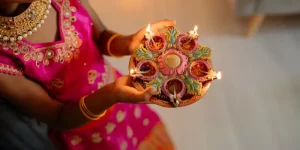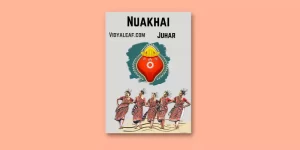Makar Sankranti also called Poush Sankranti is a harvest festival day, dedicated to The Sun God. It is celebrated in the month of Magh Krishna Paksha Dwitiya Tithi. It marks the end of the winter season and the beginning of a new harvest season. This festival usually falls in the month of January. On this day, the sun enters the zodiac signs of Capricorn.
It marks the first day of the Sun’s movement into Makar Rashi. It is the beginning of longer days from the day of Makar Sankranti. The sun starts its northward journey or Uttarayan journey from the day of Makar Sankranti, so this festival is called Uttarayan.
History of Makar Sankranti
Sankranti is considered a Deity. As per the epic, Sankranti killed a devil named Sankarasur. The day following Makar Sankranti is called Karidin or Kinkrant. On this day, Devi killed the devil Kinkarasur. Makar Sankranti is observed with social cheerfulness such as colorful decorations, kite flying, bonfires, feasts, singing, dancing, and Melas. The people who celebrate go to sacred rivers or lakes and bath in order to thank The Sun God.
Every twelve years, the Hindus observe Makar Sankranti with Kumbha Mela, which is one of the world’s largest fairs. At this Mela, the devotees pray to the Sun God and bathe at the junction of the River Ganga and River Yamuna.
Significance Makar Sankranti
Every year this festival is celebrated in the month of January. This festival is devoted to the Hindu religion, The Sun God Surya. Makar Sankranti is considered very important for spiritual practices and people take a holy bath in rivers especially Ganga, Yamuna, Godavari, Krishna, and Kaveri. It is trusted that bathing results in excellence and forgiveness of past sins. They also pray to the Sun God and express sincere thanks for their success and well-being.
The preparation of sweets and Pithas from jaggery and sesame are cultural customs among Hindus. This sweet symbolizes being together in peace and cheerfulness in spite of the individuality and variation between individuals. In most parts of India, it is the period of early stages of the Rabi crop and agricultural cycle, where crops are sown and hard work in the field is completely over.
Celebration in Odisha
The festival is known as Makar Sankranti in Odisha. In this festival, people prepare Makara Chaula from uncooked newly harvested rice, banana, coconut, Jaggery, Sesame, Rasagola, Khai, and Cheena puddings which are offered as Bhoga to the god and goddess. The end of the winter season requires a change in food habits and intake of nutritious and rich food. Hence, this festival bears customary ethnic importance.
It is very important for deities who worship the Sun God at the Konark Temple with goodwill and devotion as the Sun God starts its annual shift northwards. Many individuals at the start of the day of the festival program a ritual bath while fasting.
Makara Mela or Fun Fair is observed at Dhabaleswara Pitha in Cuttack, Hatakeshwar at Atri in Khordha, Makara Muni temple in Balasore, and many more.
In Puri, distinctive and unique rituals are carried out at the temple of Lord Jagannath at Puri. The festival is celebrated with great joy in the districts such as Mayurbhanj, Keonjhar, Kalahandi, Koraput, and Sundargarh. They celebrate Makar Sankranti with great excitement by singing, traditional dancing, lighting bonfires, and having fun and enjoyment. The celebration of this festival is next to the Odia New year Maha Vishuva Sankranti which falls in the month of mid-April.
Makar Sankranti is celebrated in almost all parts of India with different names such as Magh Bihu in Assam, Lohri in Punjab, Uttarayan in Gujrat, Kichheri in Uttar Pradesh, Pongal in Tamil Nadu, Poush Sankranti in West Bengal, Maghi Sankranti in Maharashtra and Haryana, Maghi Saaji in Himachal Pradesh, Shishur Saenkraat in Kashmir, Makar Sakraat in Bihar and Jharkhand, Makaravilakku in Kerala and Makar Sankranti in Odisha, Andhra Pradesh, Telengana and Karnataka.



